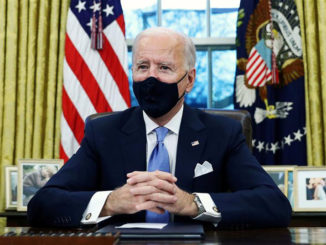
WASHINGTON (TIP) :
High-speed rail was supposed to be President Obama’s signature transportation project, but despite the administration spending nearly $11 billion since 2009 to develop faster passenger trains, the projects have gone mostly nowhere and the United States still lags far behind Europe and China. While Republican opposition and community protests have slowed the projects here, transportation policy experts and members of both parties also place blame for the failures on missteps by the Obama administration – which in July asked Congress for nearly $10 billion more for highspeed initiatives.
Instead of putting the $11 billion directly into those projects, critics say, the administration made the mistake of parceling out the money to upgrade existing Amtrak service, which will allow trains to go no faster than 110 miles per hour. None of the money originally went to service in the Northeast Corridor, the most likely place for high-speed rail. On a 30-mile stretch of railroad between Westerly and Cranston, RI, Amtrak’s 150mph.
Acela hits its top speed — for five or 10 minutes. On the crowded New York to Washington corridor, the Acela averages only 80mph, and a plan to bring it up to the speed of Japanese bullet-trains, which can top 220mph, will take $150 billion and 26 years, if it ever happens. Florida, Ohio and Wisconsin, all led by Republican governors, canceled high-speed rail projects and returned federal funds after deeming the projects too expensive and unnecessary.
“The Obama administration’s management of previously appropriated high-speed rail funding has been as clumsy as its superintending of the Affordable Care Act’s rollout,” said Frank N Wilner, a former chief of staff at the Surface Transportation Board, a bipartisan body with oversight of the nation’s railroads. When Obama first presented his vision for high-speed rail nearly four years ago, he described a future of sleek bullet trains hurtling passengers between far-flung American cities at more than 200mph.
“Within 25 years, our goal is to give 80 per cent of Americans access to high-speed rail,” Obama said in his 2011 State of the Union address. “This could allow you to go places in half the time it takes to travel by car. For some trips, it will be faster than flying — without the pat-down.” But as Obama’s second term nears an end, some experts say the president’s words were a fantasy.
“The idea that we would have a high-speed system that 80 per cent of Americans could access in that short period of time was unadulterated hype, and it didn’t take an expert to see through it,” said Kenneth Orski, the editor and publisher of an influential transportation newsletter who served in the Nixon and Ford administrations. “And scattering money all around the country rather than focusing it on areas ripe for highspeed rail didn’t help.” The Acela, introduced by Amtrak in 2000, was America’s first successful high-speed train, and most days its cars are full.
The train has reduced the time it takes to travel between Washington, New York and Boston, but aging tracks and bridges – including Baltimore’s 100-year-old tunnel where trains come to a crawl – have slowed it down. It takes two hours and 45 minutes to travel from New York to Washington on the Acela. If the Acela were a bullet train traveling on new tracks, it would take 90 minutes. Another problem is that Amtrak’s funding is tied to annual appropriations from Congress, leaving it without a long-term source of money. “I do what I can do,” said Joseph Boardman, Amtrak’s president. “But I don’t sit back and wait for $15 billion to rebuild the Northeast Corridor.” For now, Amtrak is rebuilding a stretch of track in central New Jersey that will permit travel at 160mph for 23 miles.
But advocates say they are hopeful. “Once something gets built, then we’re going to see more projects get going,” said Ray LaHood, Obama’s first transportation secretary. LaHood said it took the Interstate System of highways decades to be completed, and he predicts that high-speed rail will be the same. LaHood said California seemed the most likely candidate for success with high-speed rail, even though plans for a 520-mile train route between Los Angeles and San Francisco have been mired in controversy.
Despite strong backing from Gov. Jerry Brown, a court ruling had tied up state bond funding for the $68 billion project. An appeals court on July 31 threw out that ruling, which had been based on a lawsuit. But opponents are still increasing calls to kill the project, and polls show waning public support for it. Still, California has begun construction of the tracks and put out bids for a vendor to build the trains. And the new rail project will get an infusion of funds from the state’s cap-and-trade program, which requires business to pay for excess pollution.





Be the first to comment